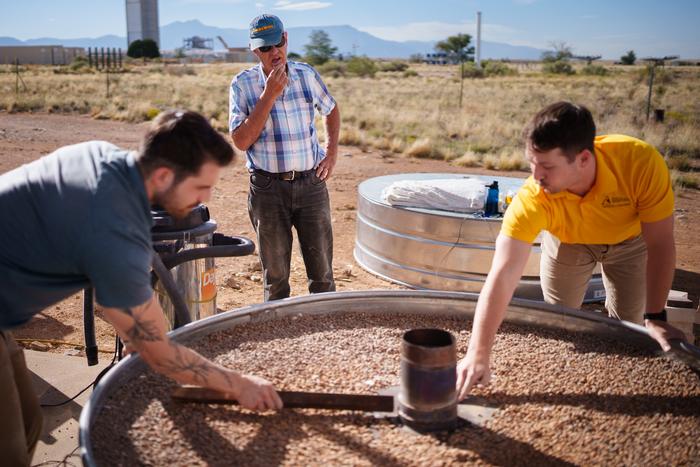
The Rock-Bed Revolution
New Mexico-based CSolPower, in partnership with Sandia National Laboratories, is pioneering a novel and cost-effective energy storage system using rocks. This groundbreaking approach aims to bolster the adoption of renewable energy sources, specifically solar and wind, by ensuring energy availability during high-demand periods or when these sources are intermittent.
According to Luke McLaughlin, a Sandia mechanical engineer, the storage system integrates renewable energy into an electrically charged thermal energy structure. Interestingly, regular gravel from landscaping firms can be employed in this system, eliminating the need for extensive preparation.
Under the lens at the National Solar Thermal Test Facility, a compact 100-kilowatt-hour test rig showcased the rock bed’s potential. With the ongoing installation of photovoltaic panels, the intent is to demonstrate the bed’s proficiency in using intermittent energy.
Walter Gerstle, CSolPower’s co-founder, emphasized the system’s versatility: “One of the advantages of thermal energy storage in rocks is that it can be built anywhere. It can be commodified and doesn’t require extensive permitting. We believe it can be implemented more quickly and economically than other approaches.”
One standout feature of CSolPower’s invention is its long-duration energy storage. Tests indicated that the rock bed could be heated to over 900°F and maintained for up to 20 hours. This facilitates storing excess daytime electricity as heat, which can later be used for warming water and homes in the evening.
Set for continued prototype testing till June 2024, CSolPower is keen on transitioning this lab-scale initiative into a market-ready solution. Successful trials might soon see northern New Mexico greenhouses utilizing this rock bed technology to maintain optimal temperatures throughout the year.
The Technology Readiness Gross Receipts initiative funds this project phase, aiming to aid New Mexico businesses in commercializing their innovations.
This rock-bed solution represents a promising stride towards green electricity generation and broadens the horizon for sustainable energy storage.
